Page Content
- The Importance of International Cooperation
- Relations Between Man and the Birds
- A Plague of Locusts
- International Agreements
- Affect of Migratory Birds on Man
- Methods of Tracking Bird Migration
Question: Why do birds have tags?
Answer: When a bird has a tag on it, or a ring around its leg, it means the bird is being tracked. This is typically done by official organizations, through international cooperation, for research about flight patterns and behavior of bird migration.
Tracking has become more important with the development of technology and man’s intervention with nature which has affected the environment. There are a number of different methods for tracking birds, as described in this page below.
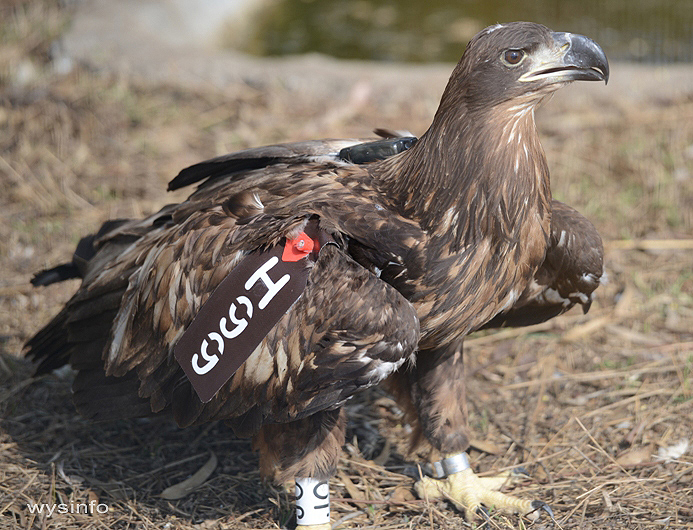
The Importance of International Cooperation
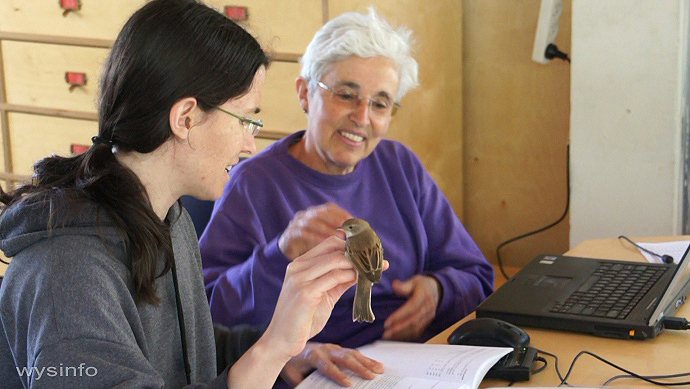
How is bird migration connected to international cooperation?
And how does the study of bird migration help to promote international cooperation?
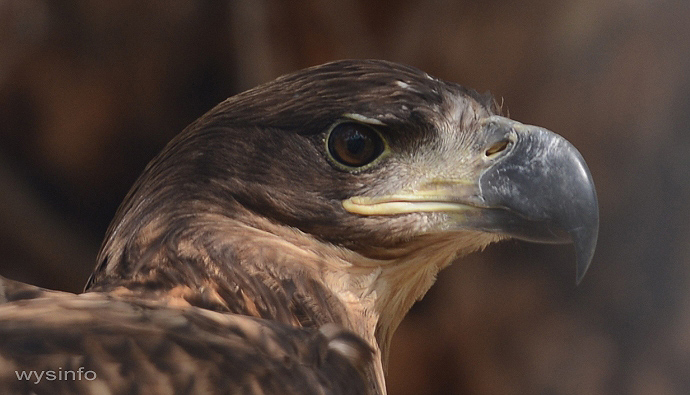
Bird migration, or more generally bird movement, knows no artificial boundaries.
When the climatic conditions or the food supply reach a level that could endanger their existence, they move on to an area that will accommodate their need for survival – borders are not part of their world.
Learning about the movement of birds therefore, even if only for the sake of pure knowledge, both depends on and encourages cooperation among the countries that are under the migration routes or flyways.
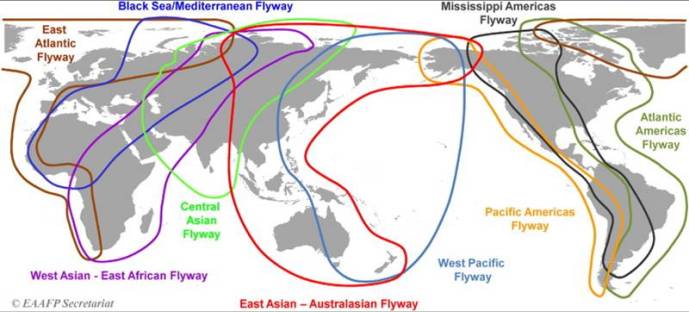
Source: G.C. Boere, C.A. Galbraith & D.A. Stroud (eds). Waterbirds around the world. The Stationery Office, Edinburgh, UK. pp. 40-47.
Relations Between Man and the Birds
There are some important practical reasons for international cooperation when considering bird migration. We live in an era of great and rapid change in man’s knowledge and subsequently in technology. We change the planet that we inhabit and, very often, are not aware of the consequences that follow.
Industrialization, urbanization and deforestation are responsible for pollution of the planet’s atmosphere, air, soil, groundwater and oceans. As a result we, to a great extent, are responsible for the global climatic changes. This affects the wildlife around us as well as our own lives.
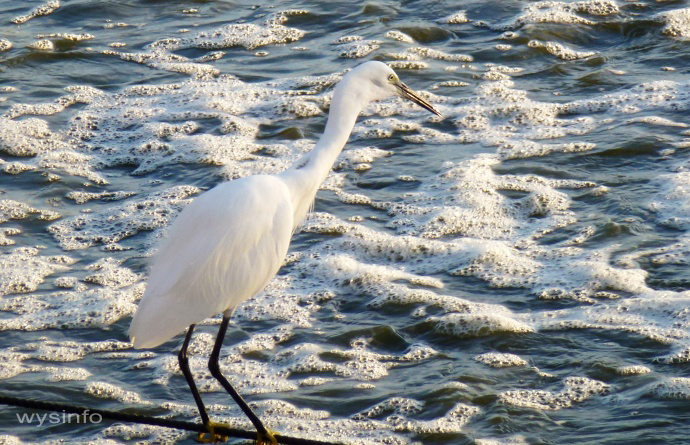
Little Egret Standing by Polluted Water
Numerous studies around the globe have been made, and are still going on, investigating the effects of man’s intervention with nature on migratory birds, and on birds as a whole. Conclusions are quite clear and below we mention just few of them.
- Man’s use of pesticides is responsible for diminishing bird populations and sometimes also responsible for the extinction of a whole species along the food chain (for example, when small animals or birds die as a result of poisoning and then vultures feed on these).
- Deforestation diminishes/changes the population of birds in areas where it occurs.
- Urbanization disorients some migrating birds, thus distracting them from their original destination point.
- Warming up of the planet is responsible for early breading of some bird species. It also encourages early migration.

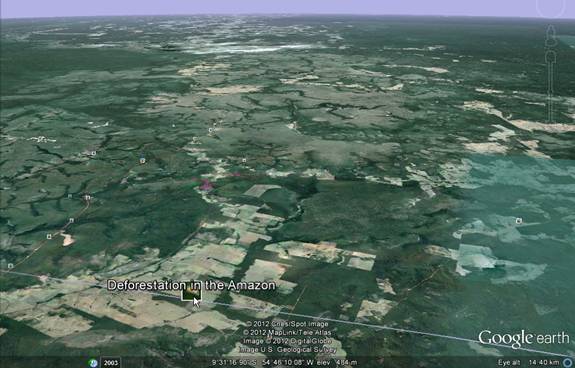
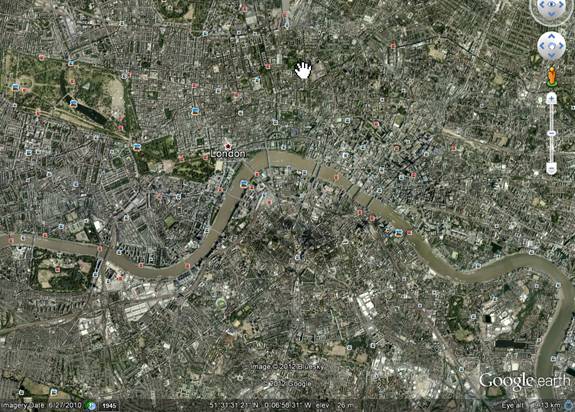

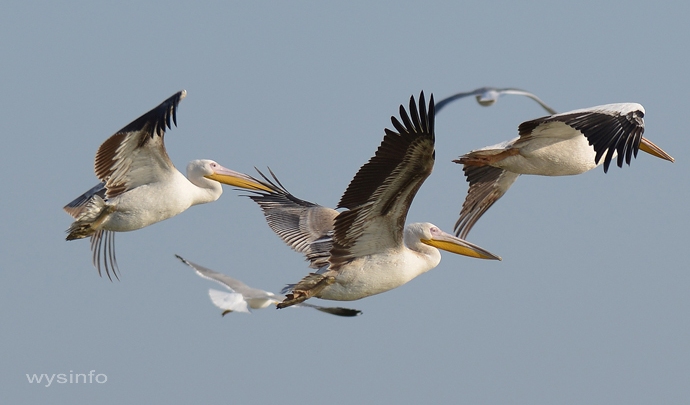
A Plague of Locusts – The Need for Cooperation and the Effect on Migratory Birds
A good example for a need for cooperation is the occasional spread of pests, such as locusts, which can cause an ecological and agricultural disaster wherever it occurs.
In January 2013 swarms of the locusts – originating from Sudan – were spotted along the Red Sea coast in north-eastern Sudan, Eritrea, Saudi Arabia and south-eastern Egypt. The entire region was placed on a “locust alert” by the United Nations Food and Agriculture Organization (FAO).
The locusts arrived in Israel a few months later. Very quickly millions of locusts infested the southern region of the country. Attempts were made to control the problem but the first wave of attempts was unsuccessful. The locusts succeeded in laying eggs which introduced a new generation and a new attempt was required.
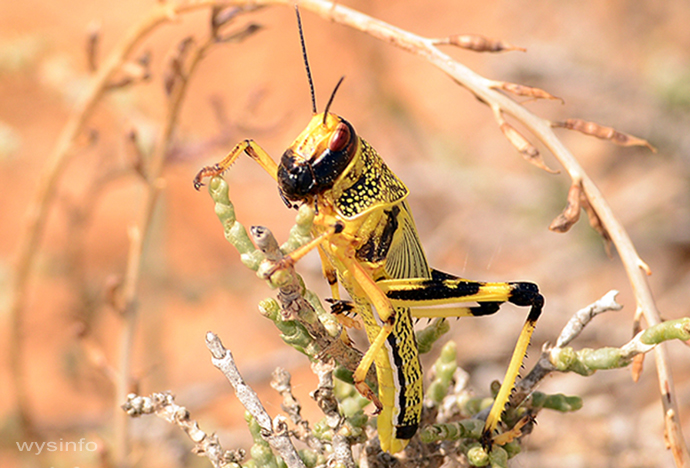
It was clear that the plague had to be stopped so that it would not spread further north and to other countries. A task force was set up and a decision was made to spray in order to eliminate the pests.
This immediately raised the question about the danger that such spraying would have on the migratory birds and other wildlife in the area. The concern was for both the direct effect of the spraying and the indirect effect resulting from birds eating the locusts. Working with the FAO, the Ministry of Agriculture and teams of international specialists eventually decided on a solution which they believed would minimize the danger to man and animals.
Incidences like this can only be dealt with internationally. It is critical that the effect on the migratory birds and other wildlife is monitored and that the information is shared among countries.
International Agreements
There are a number of agreements around the world that aim toward the protection of migratory birds. For example there is the Migratory Bird Treaty Act of 1918 (MBTA) which was set up to ensure the protection of migratory birds in North America, and there is the AEWA (African-Eurasian Waterbird Agreement) which is dedicated to the conservation of migratory waterbirds of that area.
For the full text of the Migratory Bird Treaty Act of 1918 (MBTA) see http://www.fws.gov/laws/lawsdigest/migtrea.html.
The map below reflects the cooperated effort for the protection of migratory waterbirds by countries under the West Asian – East African flyway and the Black Sea – Mediterranean flyway, as of 2012.
As you can see in the map, a large number of countries signed the AEWA (African-Eurasian Waterbird Agreement). The agreement sets out rules and the contracting parties have made a pact to follow these rules. The rules cannot be enforced by any international body so it is up to each of the countries to monitor and encourage compliance.
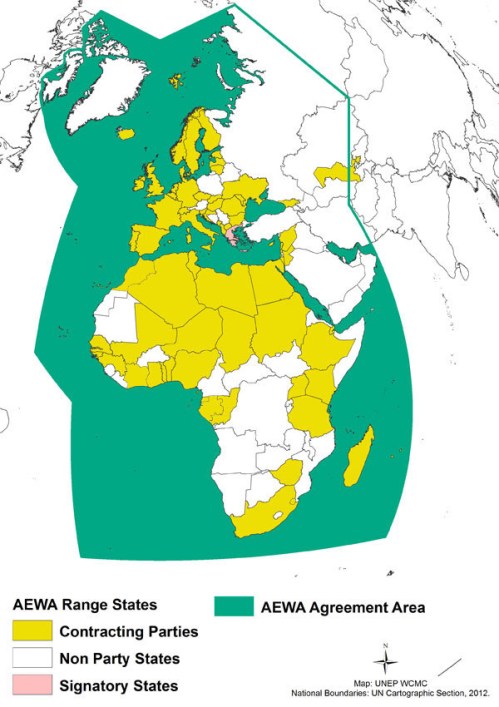
Map of countries signed on AEWA (African-Eurasian Waterbird Agreement)
The current map can be viewed at http://www.unep-aewa.org/
Effect of Migratory Birds on Man
Another practical reason for following the birds is to understand and study the effect that migratory birds may have on man, for example the spread of viruses around the globe.
It has been discovered that a substantial number of migratory birds are carriers of viruses that potentially can affect the health of human beings. It was found, for example, that the Blue Nile virus reached Europe and the US via migratory birds serving as carriers. The virus is not contracted by humans directly from the birds; rather it is transmitted through mosquitoes that sting the birds and then humans.
Collisions between birds and aircrafts also warrant research about migratory patterns. Such collisions have been causing damage and loss of human life for many decades. Migratory birds and birds as a whole are attracted to the open space that exists around the airfields, where they may find food and also air currents that help them to pick up height before continuing their journey to their final destination.
The use of radar to understand the scope of the danger by identifying the volume of flocks, size of birds and their direction of movement helped to reduce these accidents drastically.
Sharing the knowledge instantly with other airports that are located along the bird migration paths is another example of how important it is to have international cooperation regarding this matter.
Methods of Tracking Bird Migration
Migratory birds travel based on a predictable seasonal schedule, while nomadic or wandering birds move about in a more erratic fashion, without an easily identifiable pattern to their movement. There are different techniques for learning about migratory bird behavior and migration routes or flyways.
Among them are:
- Direct observation – Members of nature reserve organizations, together with birding enthusiasts around the world, watch for and document the types of birds that they observe and share the information. This method is limited to day light and is also not an accurate means for tracking passerine birds that fly higher than 300 meters above the ground. In many cases small birds are missed by the observers even from a height of a few dozens of meters above the ground.
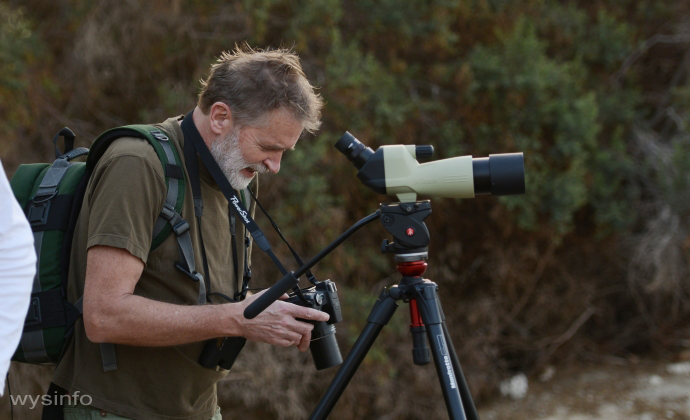
- Marking – Individual birds are caught in nets that are specially designed to avoid harm to the birds. The birds are checked, measured, weighed, and the information is registered in a database. Each of them is numbered and a ring, whose weight is insignificant compared to the weight and size of the bird, is attached to their leg. When the same bird is caught again along its migration route, this allows researchers to understand its pattern of migration.Tagging is usually used for the bigger migratory birds, like pelicans and vultures, and serves the same purpose as ringing.

- Radio tracking – trained observers attach a miniature radio transmitter to the bird and then track the signals.

- Radar observation – Unlike direct observation, radars can track the birds during the day and night and are relatively unaffected by weather conditions. Radars are used to identify the volume of a flock, the size of the birds and their directions.
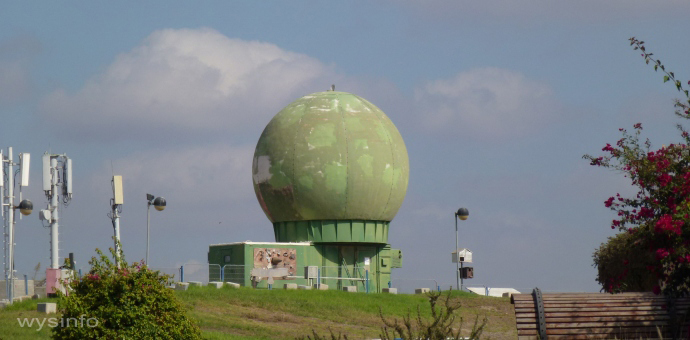
- Satellite tracking – Satellite data collection systems, such as ARGOS or GPS systems, are used for, among other purposes, tracking and learning more about bird migration. Transmitters attached to individual birds send valuable information about bird migration patterns, location, height, direction and physical state and health.
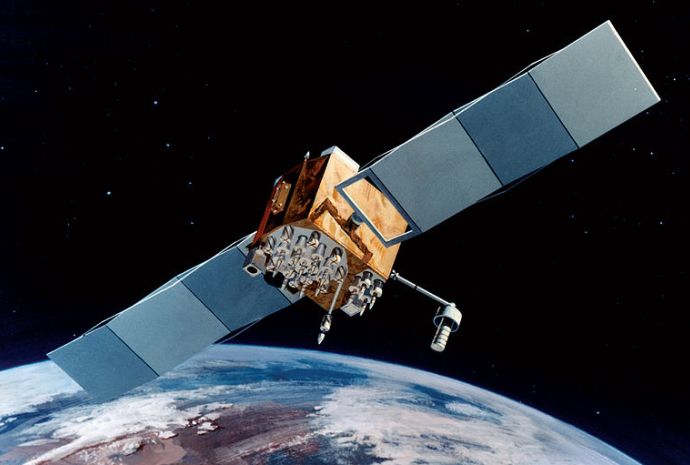
- Stable Isotopes as a way of tracking – Stable isotopes are non-radioactive forms of elements in nature that have similar chemical properties but vary in their atomic mass due to differences in the number of neutrons. Stable isotopes, unlike non-stable isotopes, do not decay. The volumes of carbon (13c), nitrogen (15n) and hydrogen (2h) vary in nature based on location and context. These isotopes eventually can be identified on birds’ tissues, making them very useful in the research of bird migration.
The fact that hydrogen stable isotopes vary with latitude, that carbon stable isotopes vary in plants growing in areas that have different water levels, and that sulfur stable isotopes differ for example between marine and terrestrial environments, all make it possible to identify the area, latitude, longitude and season of bird migration together with the conditions in those areas at that time stamp.
Feather tissues are regularly used for this purpose. Most species of migratory birds go through a complete molt every year. The isotopic stamp is registered in their feather tissues. Samples of these tissues, collected later in the year, supply rich information about the area during the molt. When needed, blood samples are taken and stable isotopes from other organs are used.
When a bird is caught again along its migration route, these methods of tracking allow researchers to understand patterns of migration. For example, some song birds, only 3 grams in weight, have been observed to cross over 3000 km between Israel and Europe in 5 days only.
Sharing the knowledge of bird movement not only helps us to understand their migration patterns faster and better, it goes far beyond that. It can connect countries and people, even those in conflict, and can help them find a common interest, promoting international cooperation.